Abstract
Loesche, Walter J. (Forsyth Dental Center and Harvard School of Dental Medicine, Boston, Mass.), Ronald J. Gibbons, and Sigmund S. Socransky. Biochemical characteristics of Vibrio sputorum and relationship to Vibrio bubulus and Vibrio fetus. J. Bacteriol. 89:1109–1116. 1965.—Twenty-seven strains of Vibrio sputorum were isolated from human gingival debris. All strains reduced nitrate beyond nitrite, and all produced H2S. None produced catalase, indole, or acetylmethylcarbinol. Carbohydrates were not fermented, and acid end products or volatile neutral products could not be detected. Motility was observed infrequently, although 14-hr cultures usually had a few cells which displayed darting motility. Shadowed electron microscopic preparations demonstrated that most cells in a given culture were nonflagellated, although some cells with a single terminal or subterminal flagellum were always observed. V. sputorum was demonstrated not to be a strict anaerobe as previously described, but rather a microaerophile. Addition of nitrate to culture media markedly enhanced growth. V. sputorum was found to be closely related to the animal microaerophilic vibrios, V. bubulus and V. fetus. V. sputorum differed from V. fetus by being capable of anaerobic growth, producing H2S, and failing to produce catalase or to grow in 10% O2. Antigens of V. sputorum cross-reacted in low titer with antisera to V. fetus serotypes I, II, III, and V. V. sputorum differed from V. bubulus by being inhibited by 3.5% NaCl and by qualitative differences in growth in the presence of 1% glycine and 10% O2. These differences do not appear sufficient to recognize two distinct species, and it is proposed that both species be recognized as V. sputorum, which has priority. Strains unable to grow in 3.5% NaCl would be considered V. sputorum var. sputorum, whereas strains capable of growth in 3.5% NaCl would be V. sputorum var. bubulum.
Full text
PDF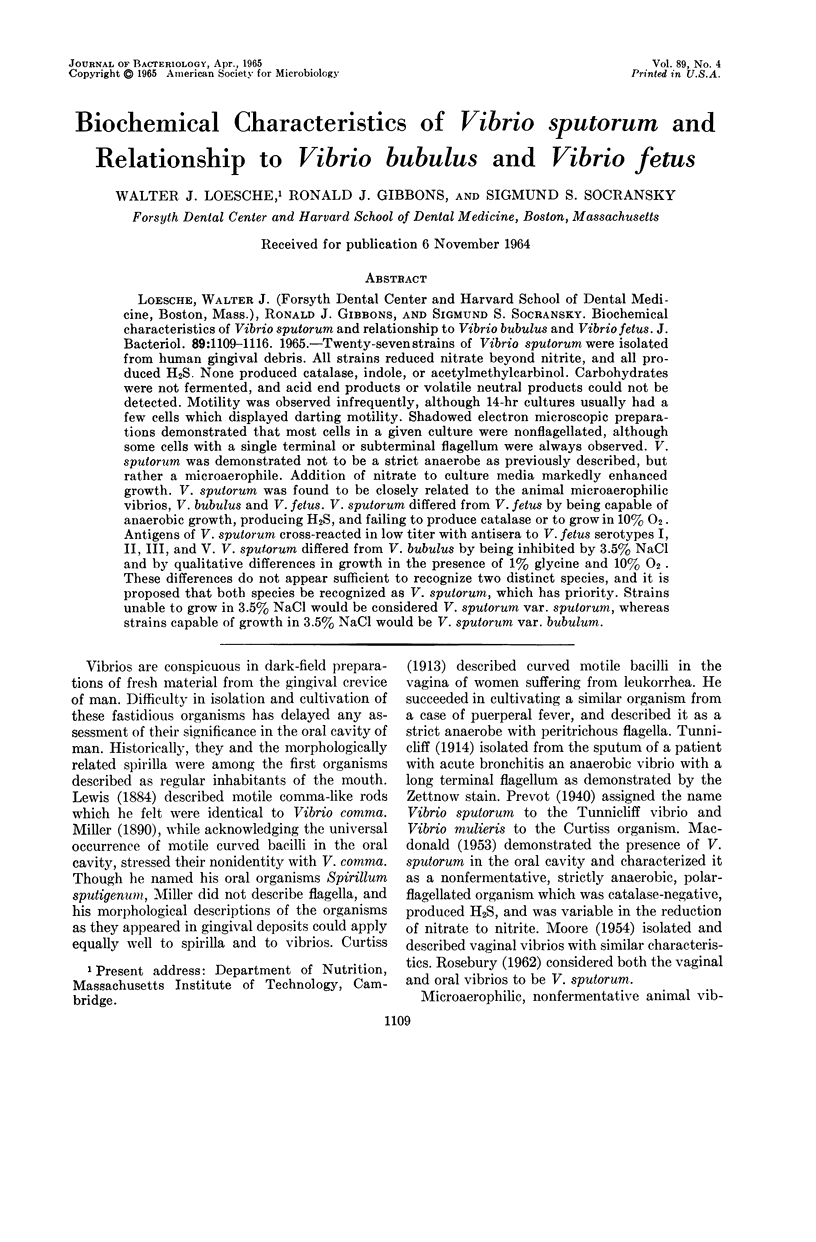
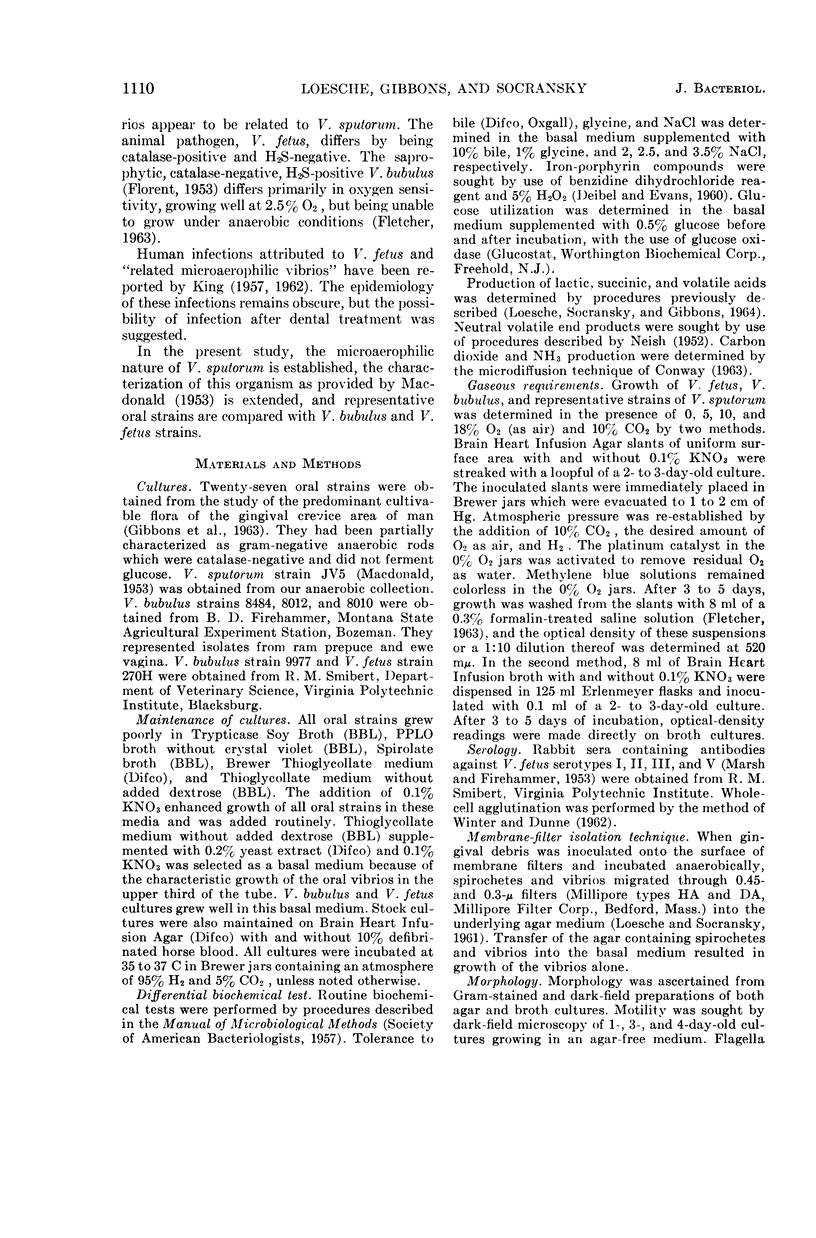
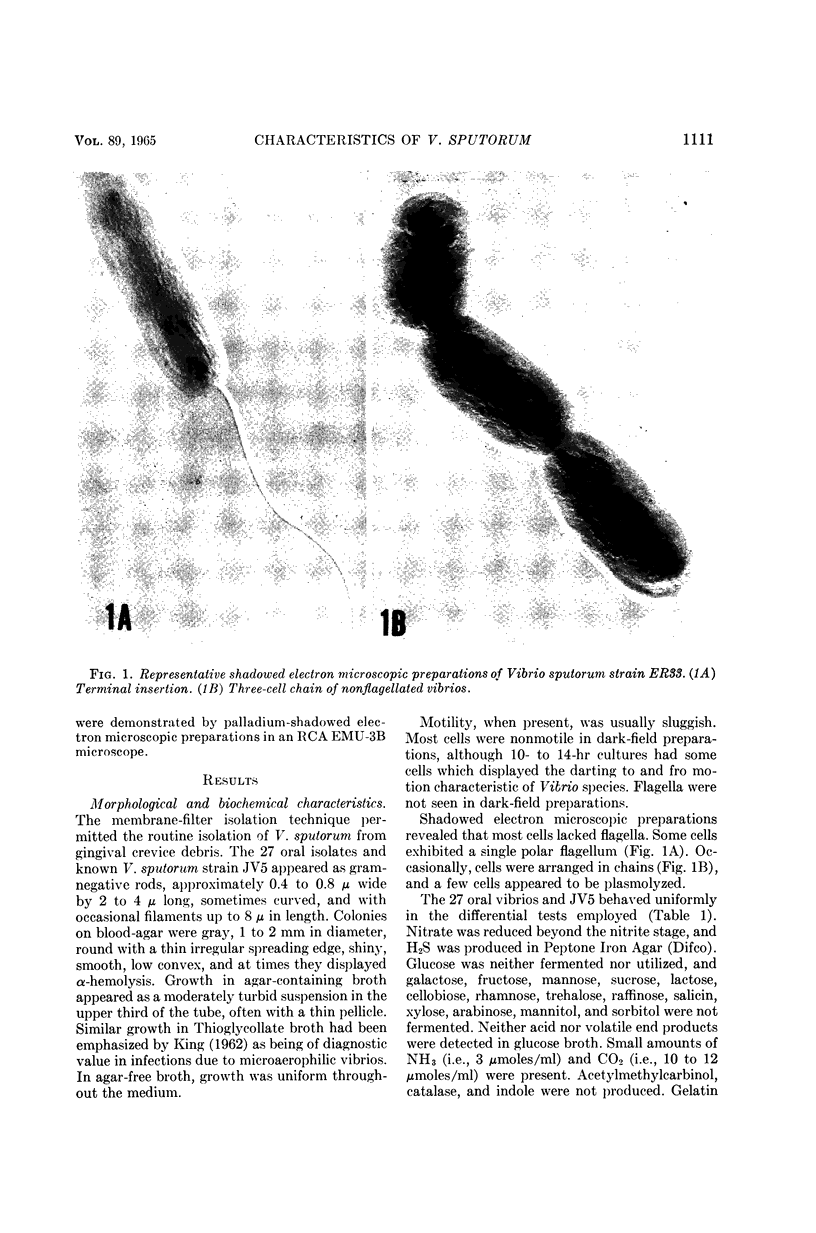
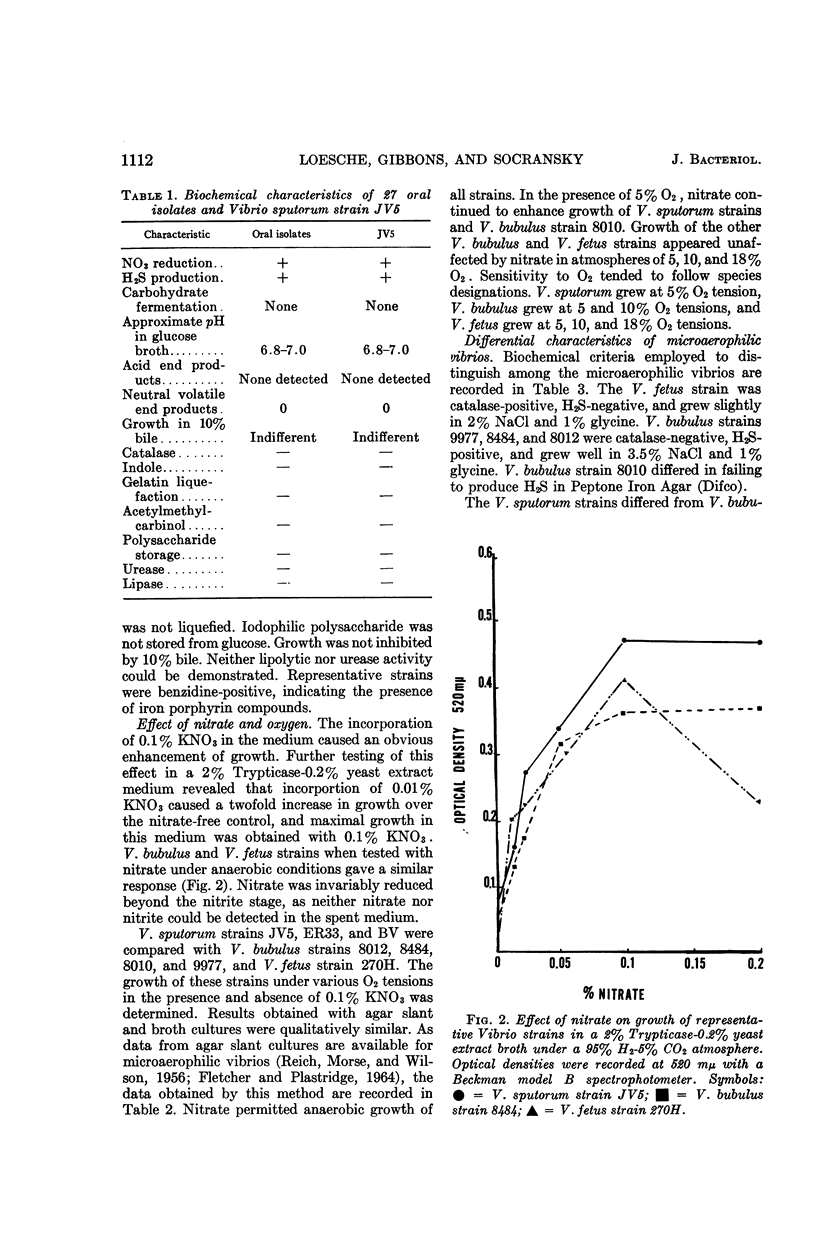
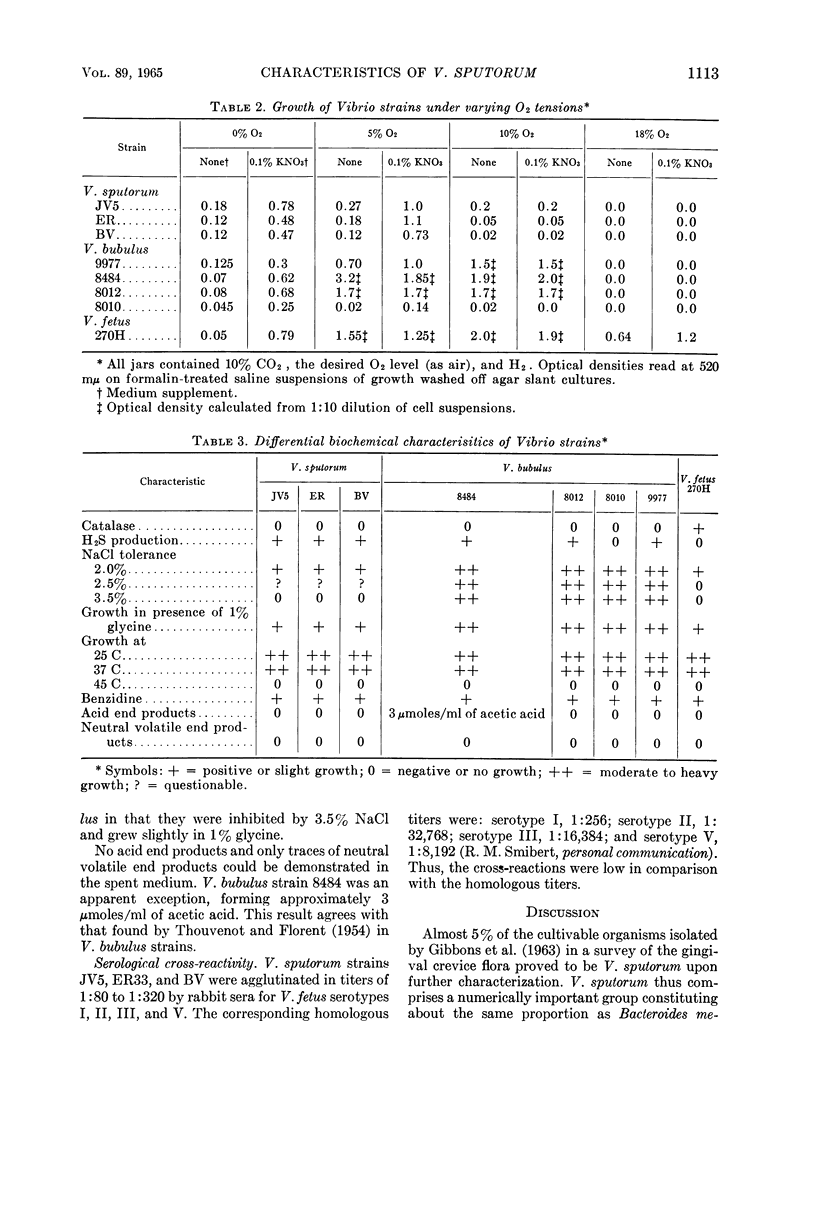
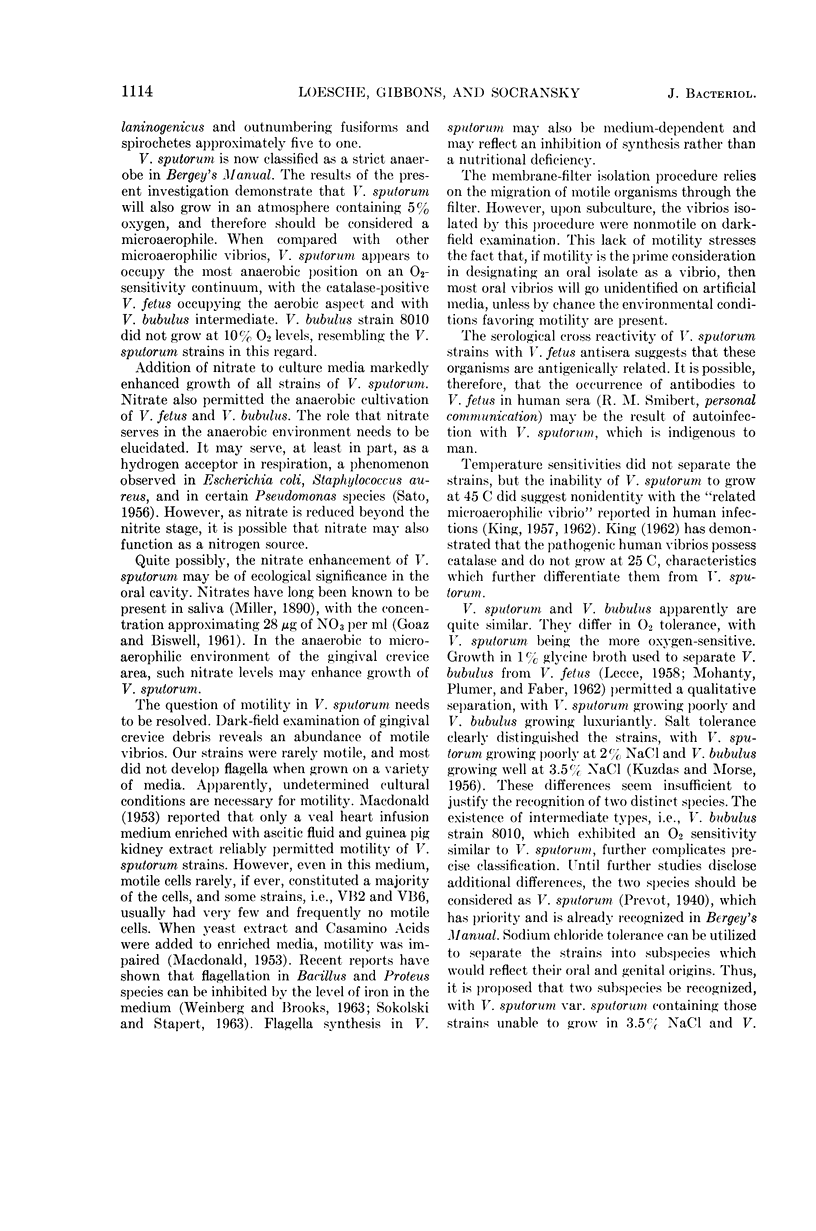
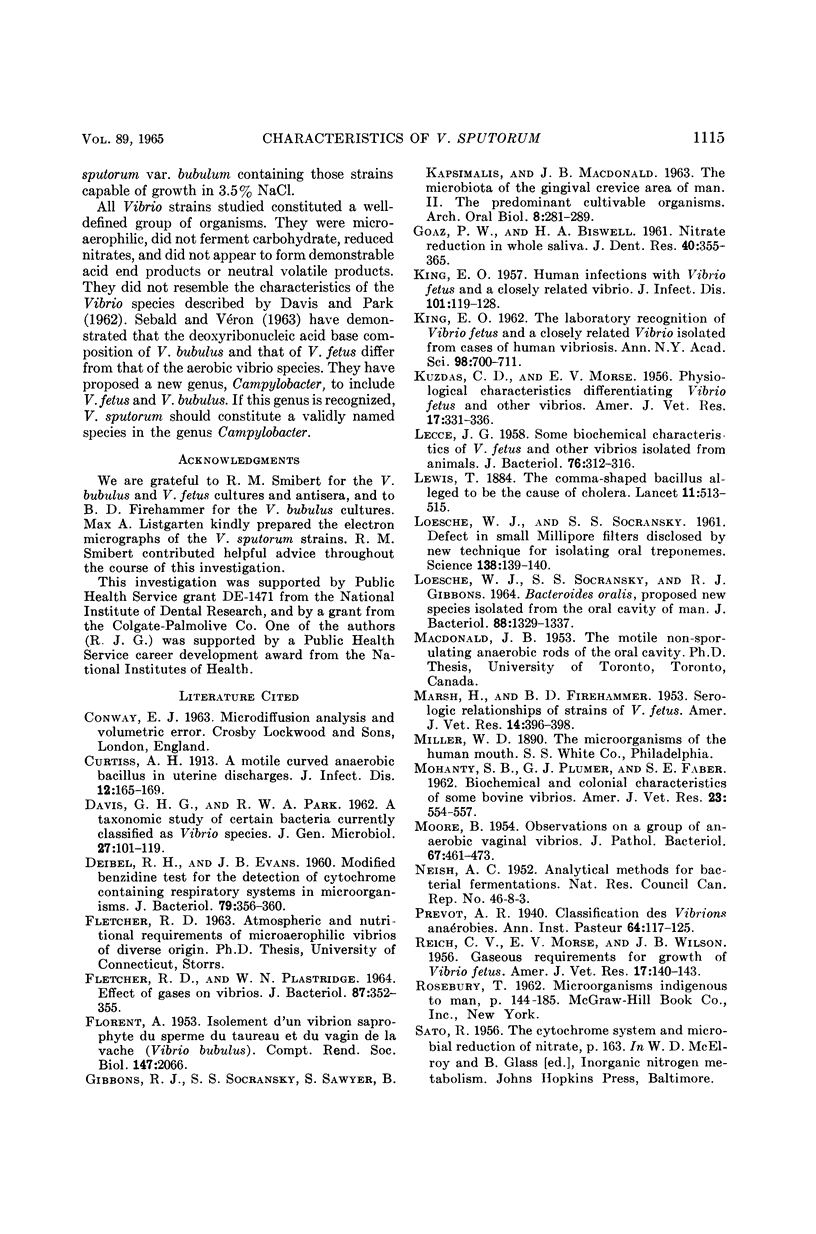
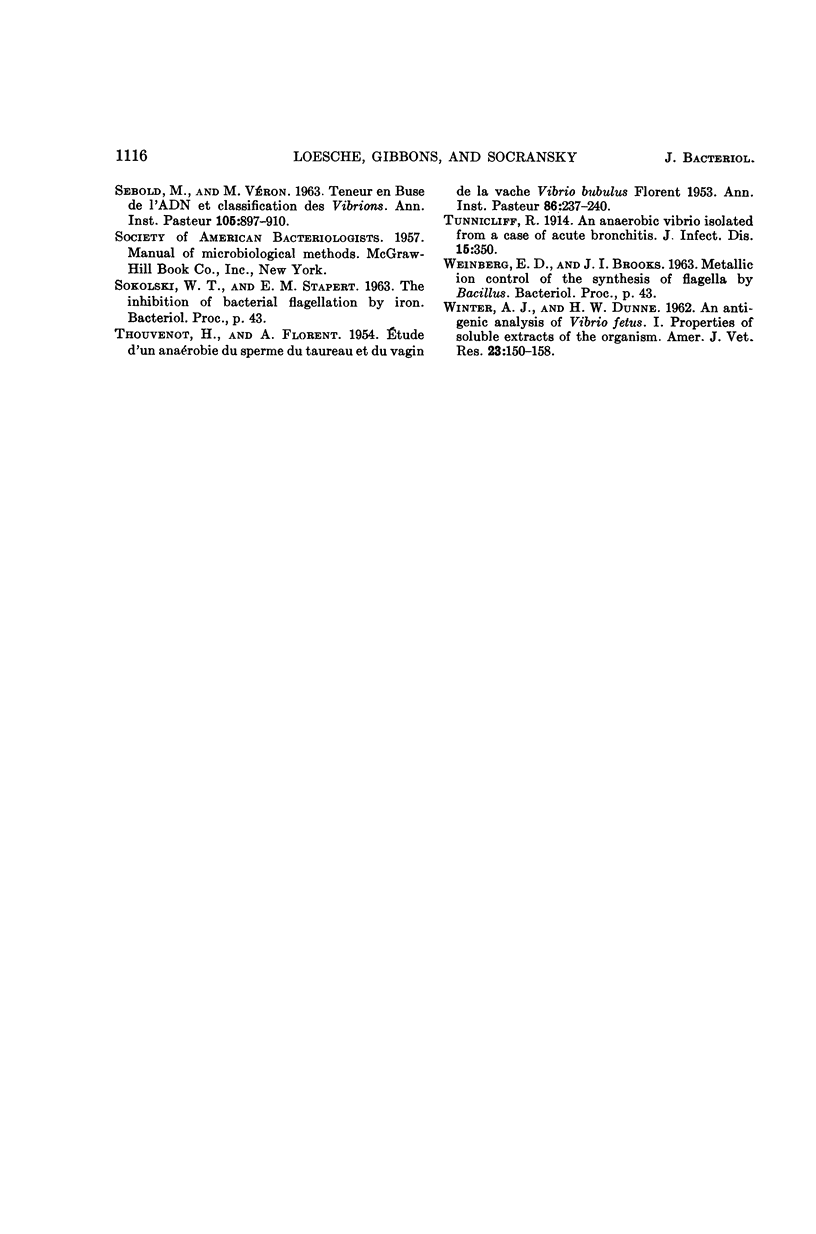
Images in this article
Selected References
These references are in PubMed. This may not be the complete list of references from this article.
- DAVIS G. H., PARK R. W. A taxonomic study of certain bacteria currently classified as Vibrio species. J Gen Microbiol. 1962 Jan;27:101–119. doi: 10.1099/00221287-27-1-101. [DOI] [PubMed] [Google Scholar]
- DEIBEL R. H., EVANS J. B. Modified benzidine test for the detection of cytochrome-containing respiratory systems in microorganisms. J Bacteriol. 1960 Mar;79:356–360. doi: 10.1128/jb.79.3.356-360.1960. [DOI] [PMC free article] [PubMed] [Google Scholar]
- FLETCHER R. D., PLASTRIDGE W. N. GASEOUS ENVIRONMENT AND GROWTH OF MICROAEROPHILIC VIBRIOS. J Bacteriol. 1964 Feb;87:352–355. doi: 10.1128/jb.87.2.352-355.1964. [DOI] [PMC free article] [PubMed] [Google Scholar]
- FLORENT A. Isolement d'un vibrion saphyte du sperme du taureau et du vagin de la vache (Vibrio bulbulus). C R Seances Soc Biol Fil. 1953 Dec;147(23-24):2066–2069. [PubMed] [Google Scholar]
- GIBBONS R. J., SOCRANSKY S. S., SAWYER S., KAPSIMALIS B., MACDONALD J. B. The microbiota of the gingival crevice area of man. II. The predominant cultivable organisms. Arch Oral Biol. 1963 May-Jun;8:281–289. doi: 10.1016/0003-9969(63)90020-7. [DOI] [PubMed] [Google Scholar]
- KING E. O. Human infections with Vibrio fetus and a closely related vibrio. J Infect Dis. 1957 Sep-Oct;101(2):119–128. doi: 10.1093/infdis/101.2.119. [DOI] [PubMed] [Google Scholar]
- KUZDAS C. D., MORSE E. V. Physiological characteristics differentiating Vibrio fetus and other vibrios. Am J Vet Res. 1956 Apr;17(63):331–336. [PubMed] [Google Scholar]
- LECCE J. G. Some biochemical characteristics of Vibrio fetus and other related Vibrios isolated from animals. J Bacteriol. 1958 Sep;76(3):312–316. doi: 10.1128/jb.76.3.312-316.1958. [DOI] [PMC free article] [PubMed] [Google Scholar]
- LOESCHE W. J., SOCRANSKY S. S. Defect in small millipore filters disclosed by new technique for isolating oral treponemes. Science. 1962 Oct 12;138(3537):139–140. doi: 10.1126/science.138.3537.139. [DOI] [PubMed] [Google Scholar]
- LOESCHE W. J., SOCRANSKY S. S., GIBBONS R. J. BACTEROIDES ORALIS, PROPOSED NEW SPECIES ISOLATED FROM THE ORAL CAVITY OF MAN. J Bacteriol. 1964 Nov;88:1329–1337. doi: 10.1128/jb.88.5.1329-1337.1964. [DOI] [PMC free article] [PubMed] [Google Scholar]
- MARSH H., FIREHAMMER B. D. Serological relationships of twenty three ovine and three bovine strains of Vibrio fetus. Am J Vet Res. 1953 Jul;14(52):396–398. [PubMed] [Google Scholar]
- MOHANTY S. B., PLUMER G. J., FABER J. E. Biochemical and colonial characteristics of some bovine vibrios. Am J Vet Res. 1962 May;23:554–557. [PubMed] [Google Scholar]
- MOORE B. Observations on a group of anaerobic vaginal vibrios. J Pathol Bacteriol. 1954 Apr;67(2):461–473. doi: 10.1002/path.1700670221. [DOI] [PubMed] [Google Scholar]
- REICH C. V., MORSE E. V., WILSON J. B. Gaseous requirements for growth of Vibrio fetus. Am J Vet Res. 1956 Jan;17(62):140–143. [PubMed] [Google Scholar]
- SEBALD M., VERON M. TENEUR EN BASES DE L'ADN ET CLASSIFICATION DES VIBRIONS. Ann Inst Pasteur (Paris) 1963 Nov;105:897–910. [PubMed] [Google Scholar]
- THOUVENOT H., FLORENT A. Etude d'un anaérobie du sperme du taureau et du vagin de la vache Vibrio bubulus Florent 1953. Ann Inst Pasteur (Paris) 1954 Feb;86(2):237–241. [PubMed] [Google Scholar]
- WINTER A. J., DUNNE H. W. An antigenic analysis of Vibrio fetus. I. Properties of soluble extracts of the organism. Am J Vet Res. 1962 Jan;23:150–158. [PubMed] [Google Scholar]



